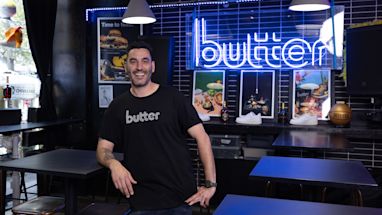Covid-19 has created extraordinary challenges for small businesses in Sydney. Foot traffic has declined but shutdowns also mean a more captive online audience.
CEO of Digivizer, one of Australia’s leading digital technology companies, shows you how to be smart with your social media so you can better navigate this new landscape. Emma Lo Russo, who helps organisations make better decisions about their online media, spoke at a recent City of Sydney Doing Better Business virtual workshop.
Emma shares a handful of key strategies so you can make the most of your online presence, no matter what your budget is.
Successful Covid-19 communication may not be what you think
Emma noticed that when businesses first began to respond to Covid-19 they focused on assuring customers that they were keeping them safe. But customers were already changing their behaviour to buy online. The lesson here is to service the customer where they are in their consumer journey.
In practice, this means having clear and up-to-date information about what you have available, how shipment works and other logistical details. Respond to enquiries in a timely manner. Make it easy for people to make decisions and ensure their experience with you is frictionless.
Emma said now is the time to shape your offering in a way that delights your customer with an experience.
“I’ve seen bars and restaurants turn simple takeaway boxes into experience packages,” Emma said.

The golden rule of authenticity
The most important element of social media is authenticity.
“I think businesses can sometimes get it wrong by only talking at the audience. Think about social as a 2-way relationship. Your customers appreciate you giving them value. So be transparent and make it easy for them to find information,” Emma said.
“If you post about your product, make sure you show them exactly what it is.”
How to make a good video
While most businesses know that video can be a powerful tool, this is also where they often misstep.
“Authentic, customer-driven content will always outperform professionally made videos. Customer content has been studied to be more trusted and to build greater brand credibility than any other form,” Emma said.
“Encourage your customer to post videos of them using your product. It could be people cooking your pasta at home, for example. Or videos of their dogs with your doggy poo bags.”
Emma says that you can own this content by encouraging a hashtag that is unique to you. Or you can reward your customer by calling out the best image and giving them a gift – or even just by thanking them.

Facebook, Instagram, Twitter: How to use them for your business
For those who aren’t social media experts deciding which channel to focus on can be a pickle. To determine what to give your time and advertising dollars to, Emma advises first finding where your customer is. From there, keep in mind this rough guide: “Instagram is obviously very aspirational. Showing people the joy of life and how your product can make them happier is key.
Facebook is where you would pay to reach new audiences. And someone who might be evaluating your brand would go to Facebook, to have a look at what's being posted about you, how quickly you respond and what rating people are giving you. Facebook can also be used for easy click-throughs to your website or shop.
“Twitter can be super effective if you're running an event. Introduce hashtags so people can follow you.
“LinkedIn tends to be a more professional database, so it’s useful if you're a business selling to other businesses.
“You want to use social to interrupt your customer where they are. This is different to them finding you through search, which is where people go if they are looking to buy something you might have,” Emma said.
Having an online strategy isn’t as complicated as it sounds
There are various online tools that can help you track conversations about your business and help locate your customers. As a general rule, first think about what you own and nurture your existing customers, use referrals and create fans.
Use hashtags to help maximise your earned media so you’re tagged when people are talking about you. Find an influencer – someone with a big following who’s good at creating content – to post or tag you to reach a larger audience. Finally, paid media is for going after a new audience.
Reboot helps small businesses adapt, innovate and bounce back better. Learn business strategies, financial planning and growth tactics to thrive.
Published 3 June 2020, updated 29 February 2024



